Eugene T. Heiner, Architect: Born 1852 in New York City. Died 1901 in Houston.
"His buildings of the 1870s and 1880s often employed the manneristic renditions of detail typical of American High Victorian architecture. In the late 1880s he
occasionally employed the Richardsonian Romanesque style, without abandoning, however, certain strong High Victorian inclinations."
- Stephen Fox, "HEINER, EUGENE T.," Handbook of Texas Online http://www.tshaonline.org/handbook/online/articles/fhe48,
Published by the Texas State Historical Association.
Heiner designed 16 courthouses in Texas. Unfortunately, only 6 of them remain standing, and not all are in original condition. I've now visited all of the counties that have or had a Eugene Heiner courthouse. This list is alphabetical by county.
occasionally employed the Richardsonian Romanesque style, without abandoning, however, certain strong High Victorian inclinations."
- Stephen Fox, "HEINER, EUGENE T.," Handbook of Texas Online http://www.tshaonline.org/handbook/online/articles/fhe48,
Published by the Texas State Historical Association.
Heiner designed 16 courthouses in Texas. Unfortunately, only 6 of them remain standing, and not all are in original condition. I've now visited all of the counties that have or had a Eugene Heiner courthouse. This list is alphabetical by county.
Austin County, Bellville, Texas. 1888
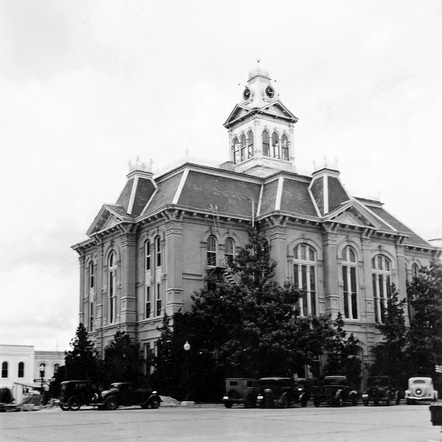
Photo, circa 1939, courtesy of TXDOT.
The Austin County courthouse burned to the ground in 1960. It was soon replaced with a modern building in the same location. Compare the building to the Wharton County Courthouse, which has been restored.
Brazoria County Courthouse, Angleton, Texas. 1897
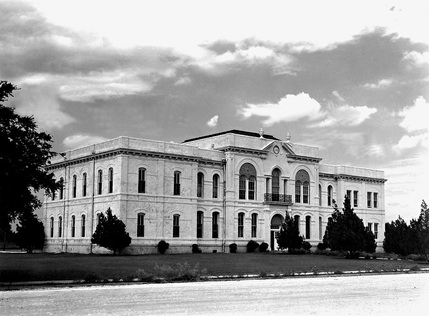
Photo, circa 1939, courtesy of TXDOT.
This courthouse survives as the Brazoria County Historical Museum.
"In the late 1970s, the courthouse was slated for destruction. With widespread community support, the Brazoria County Historical Commission petitioned the Commissioners Court to save the structure and utilize it as a museum. On March 26, 1979, County Judge E.E. Brewer signed an agreement with the Commission, leasing the courthouse to the Commission for 100 years."
"In the late 1970s, the courthouse was slated for destruction. With widespread community support, the Brazoria County Historical Commission petitioned the Commissioners Court to save the structure and utilize it as a museum. On March 26, 1979, County Judge E.E. Brewer signed an agreement with the Commission, leasing the courthouse to the Commission for 100 years."
Brazos County Courthouse, Bryan, Texas. 1892
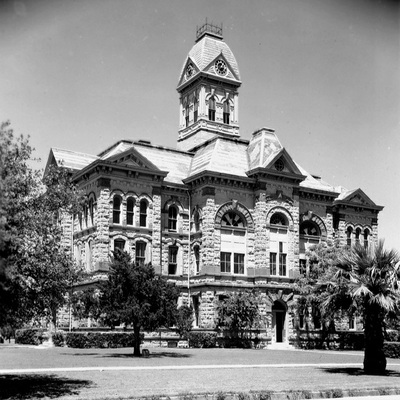
Photo, circa 1939, courtesy of TXDOT.
The demolition in 1954 of this beautiful, historic building is a disgrace.
"Way back in 1954, before 'urban renewal' entered the American vocabulary, county commissioners of Brazos County decided that they needed a new courthouse. The one they were using was sixty-two years old and was looking every month of it. Besides, it had always been considered a little 'fussy' to some Brazos Countians. All that rough-cut stone was distracting and the tower was downright... Victorian. Tower-less buildings of smooth concrete and glass bricks were going up all across the country. Why should Brazos County be stuck with this old eyesore?"
- How to Demolish a Texas Courthouse in 14 Days by Brewster Hudspeth
"Way back in 1954, before 'urban renewal' entered the American vocabulary, county commissioners of Brazos County decided that they needed a new courthouse. The one they were using was sixty-two years old and was looking every month of it. Besides, it had always been considered a little 'fussy' to some Brazos Countians. All that rough-cut stone was distracting and the tower was downright... Victorian. Tower-less buildings of smooth concrete and glass bricks were going up all across the country. Why should Brazos County be stuck with this old eyesore?"
- How to Demolish a Texas Courthouse in 14 Days by Brewster Hudspeth
Colorado County Courthouse, Columbus, Texas. 1891
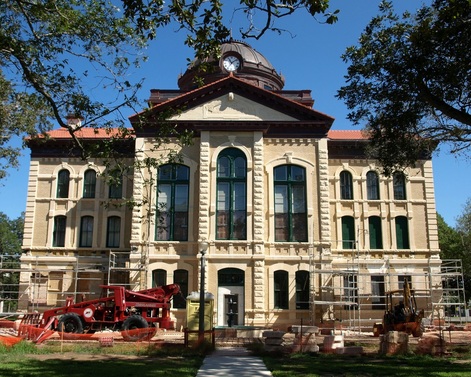
The current dome dates from 1909, when a tornado "eliminated" the original clock tower, and with it, the clock-winder's job! Interestingly, the Texas Historical Marker, circa 1969, doesn't even bother to mention the name of the architect, Eugene T. Heiner, but does include the name of the contractor. What were they thinking?
Falls County Courthouse, Marlin, Texas. 1888
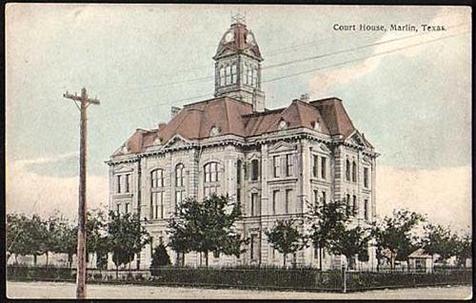
Photo of postcard, courtesy THC.
According to the Texas Historical Marker, the 1888 courthouse "deteriorated quickly" and had to be replaced in 1938, by a nice, new WPA financed building. Humm...
Another Heiner designed courthouse is demolished to make way for progress.
Another Heiner designed courthouse is demolished to make way for progress.
Galveston County Courthouse, Galveston, Texas. 1882
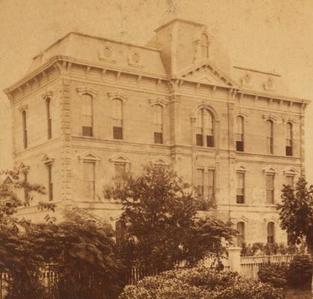
Photo courtesy THC.
Heiner reportedly "rebuilt and expanded" the existing Galveston County courthouse.
Jasper County Courthouse, Jasper, Texas. 1889
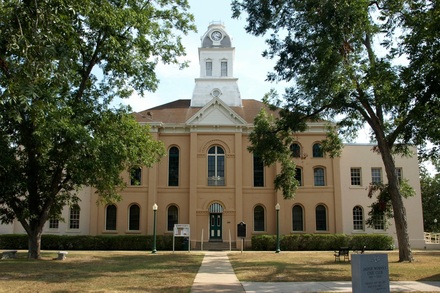
Heiner designed the central portion of the building, and, I believe, the tower, which was added in 1890. The original building was clad in red brick. In 1931 the brick was covered with stucco and wings were added on the east and west sides of the courthouse.
Jefferson County Courthouse, Beaumont, Texas. 1893
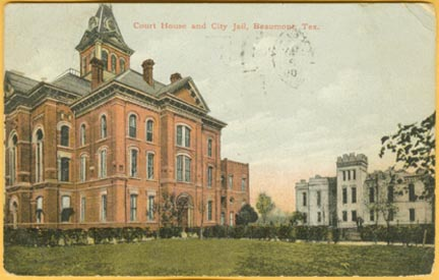
Courtesy of THC.
This Heiner designed courthouse lasted until 1931, when it was demolished and replaced by a new, Art Deco style tower. The "new" courthouse is actually a very nice building. Unfortunately, the 1893 building had to go in order to make room for the new courthouse. Not that there wasn't plenty of vacant land available for another building. Once again, our vision of "progress" doesn't leave room for history.
Lavaca County Courthouse, Halletsville, Texas. 1897
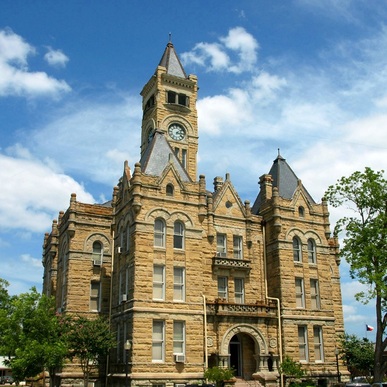
This courthouse, like the Brazos County courthouse, is an example of Heiner's use of the Romanesque revival style made popular by the Chicago architect H. H. Richardson. Thankfully, the building has survived intact and is newly restored.
Matagorda County Courthouse, Bay City, Texas. 1895
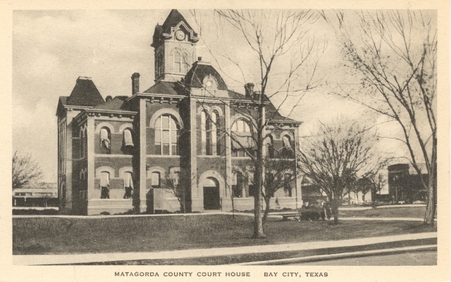
Image courtesy of courthousehistory.com
Matagorda County demolished this Heiner designed courthouse in the late 1920's to build a new courthouse which was then demolished in 1963 to make way for the current building.
Montgomery County Courthouse, Conroe, Texas. 1891
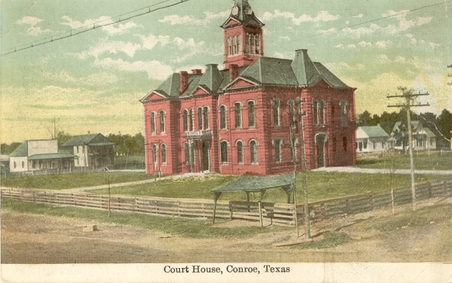
Image courtesy of courthousehistory.com
I don't know anything about this courthouse, other than it's gone.
Nacogdoches County Courthouse, Nacogdoches, Texas 1888 (no photograph)
Polk County Courthouse, Livingston, Texas. 1884
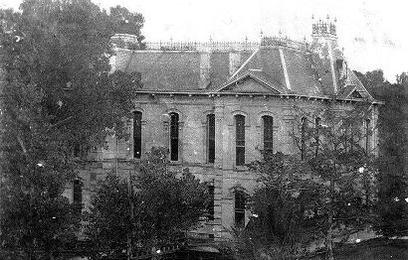
Photo courtesy of THC.
This Heiner design didn't last long at all. It was replaced in 1905 by the current building.
Runnels County Courthouse, Ballinger, Texas. 1889
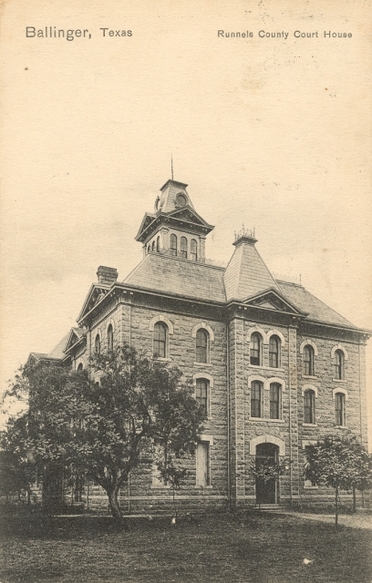
Photo courtesy of courthousehistory.com
How Eugene Henier got this commission in Ballinger, far, far from Houston, I'd like to know. Regardless, the courthouse is still standing. However, you'd be hard pressed to recognize it today. Here's how the so-called remodeling of Henier's design is described on the Texas Historical Commission's website:
"1941 - extensive remodeling: two wings added with matching stone, original stone sandblasted to match; cupola removed, wood frame roof removed and replaced with steel, all new plaster, doors, millwork, electrical, plumbing, ceilings lowered, wood windows ..." This building deserves a full restoration.
"1941 - extensive remodeling: two wings added with matching stone, original stone sandblasted to match; cupola removed, wood frame roof removed and replaced with steel, all new plaster, doors, millwork, electrical, plumbing, ceilings lowered, wood windows ..." This building deserves a full restoration.
Trinity County Courthouse, Groveton, Texas. 1884
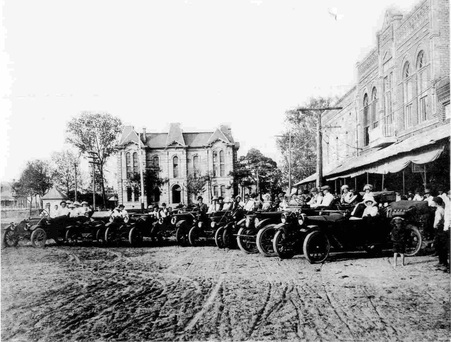
Photograph courtesy THC.
This Heiner designed courthouse in the woods of east Texas burned and was replaced by the current courthouse in 1914.
Wharton County Courthouse, Wharton, Texas. 1888
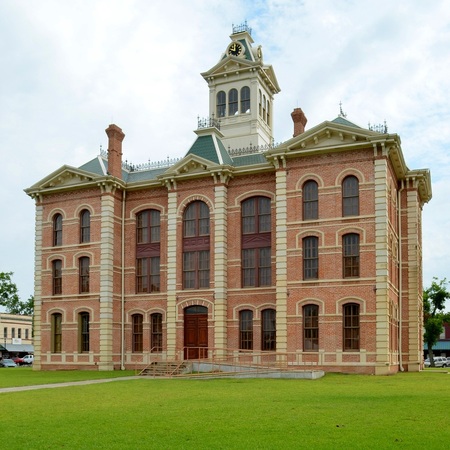
Wharton County's courthouse looks today like it did in 1888. Actually, it's probably in better condition following an extensive restoration that included the construction of a new roof and tower.
